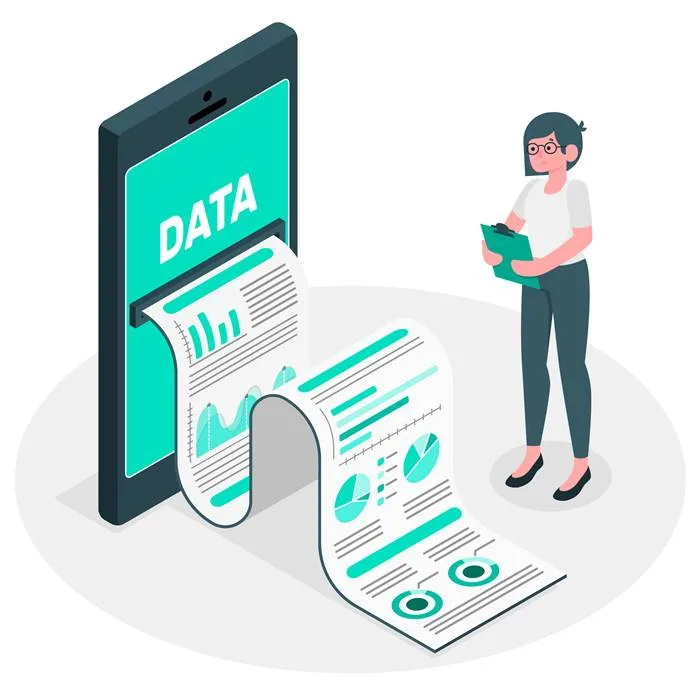Predictive modeling, which is one of the most effective analytical tools has been developed as a pillar in data science and decision-making processes for several industries. In this detailed guide, we will discuss predictive modeling as a concept and its use cases; methodologies involved in it and how these methods help shape informed predictions.
Definition Of Predictive Modeling
Predictive modeling is a process of analyzing the historical data and predicting future outcomes or patterns using statistical algorithms as well as machine learning techniques. It uses patterns and correlations within data to predict outcomes with a high level of accuracy

Applications Of Predictive Modeling
Predictive-modeling has many uses in nearly every sector such as finance, healthcare, marketing and so on. It can be used for risk assessment, customer behavior analysis, demand forecasting, fraud detection and recommendations.
6 Methods Of Predictive Modeling
Data Collection and Preparation:
The basis of predictive modeling begins with gathering relevant data and preparing the same for analysis. This includes cleaning up, arranging and preparing the raw data for modeling purposes.
Feature Selection:
It is important to determine the most effective variables or features that make up a predictive model. Feature selection makes the model more efficient and easier to interpret.
Choosing the Right Model:
The choice of the predictive-modeling algorithm is determined by the nature of a problem and data type, which can be linear regression, decision trees or support vector machines for classification problems; neural networks are suitable in cases when both continuous values and categories should be predicted.

Training the Model:
The chosen model is trained using historical data; the algorithm learns patterns and relations between input variables and target variable. This phase is important for the model’s performance on unseen data.
Validation and Evaluation:
To check the performance of the model, validation datasets are used to determine whether it generalizes well on new data. Evaluation metrics including accuracy, precision and recall allow to quantify the model performance.
Fine-Tuning and Optimization:
Iterative fine-tuning of the model includes hyperparameter tuning, feature selection refinement and optimization on validation results.
Applications of Predictive Modeling:
Financial Forecasting:
Predictive-modeling helps to forecast market trends, stock prices and financial risks allowing businessmen and investors make informed decisions.
Healthcare Predictions:
In the medical field, predictive modeling is used for disease risk assessment patient outcomes prediction and treatment plan optimization which enhance personalized healthcare solutions.
Marketing and Customer Behavior Analysis:
Through predictive-modeling, businesses can forecast customer preferences and improve marketing strategies by offering personalized recommendations to customers.

Supply Chain and Inventory Management:
The second reason why the age of consent should be lowered is that people living in poverty are more likely to have sex at an early stage. It is used by companies to predict demand, optimize inventory management and streamline the supply chain process thereby reducing cost and minimizing wastage.
Fraud Detection and Security:
Predictive modeling is used by financial institutions to detect anomalies in transactions, identify potential fraud and improve security measures for protecting confidential information.
Challenges and Considerations:
Data Quality and Availability:
The effectiveness of predictive-modelling is largely dependent on the quality and availability of data. Inaccurate or incomplete data may result to biased predictions.
Overfitting and Underfitting:
Finding the right balance to avoid overfitting (model fitting training data too closely) or underfitting is a common issue in predictive modeling.
Interpretability:
While some of the modern predictive models, including neural networks, may be too complex to interpret for users.
7
7 books and resources on predictive modeling that you might find helpful for your blog:
“The Elements of Statistical Learning” by Trevor Hastie, Robert Tibshirani, and Jerome Friedman
- This is a comprehensive book that covers a wide range of statistical learning techniques, including predictive modeling.
“Predictive Analytics: The Power to Predict Who Will Click, Buy, Lie, or Die” by Eric Siegel
- Eric Siegel provides an insightful overview of predictive analytics and its applications in various fields, making it accessible for readers with different levels of expertise.
“Machine Learning Yearning” by Andrew Ng
- This book is more focused on practical aspects of deploying machine learning systems, including predictive modeling. Andrew Ng provides valuable insights from his experience at Google and Baidu.
“Python Machine Learning” by Sebastian Raschka and Vahid Mirjalili
- If you’re interested in implementing predictive models using Python, this book is a great resource. It covers various machine learning algorithms with practical examples.
Kaggle (www.kaggle.com)
- Kaggle is a platform for predictive modeling competitions. You can find datasets, kernels (code snippets), and discussions related to predictive modeling. It’s a great resource for practical learning.
Coursera – Machine Learning by Andrew Ng
- Andrew Ng’s Machine Learning course on Coursera is a popular and highly regarded resource. It covers the fundamentals of machine learning, including predictive modeling.
“Applied Predictive-Modeling” by Max Kuhn and Kjell Johnson
- This book focuses on the practical aspects of building and evaluating predictive models. It’s a great resource for those looking to apply predictive modeling techniques in real-world scenarios.
Predictive modeling is the pinnacle of data-driven revolution, allowing organizations to make better and more strategic decisions. With the advancement of technology, predictive modeling keeps growing and providing different perspectives on innovations in various sectors.




